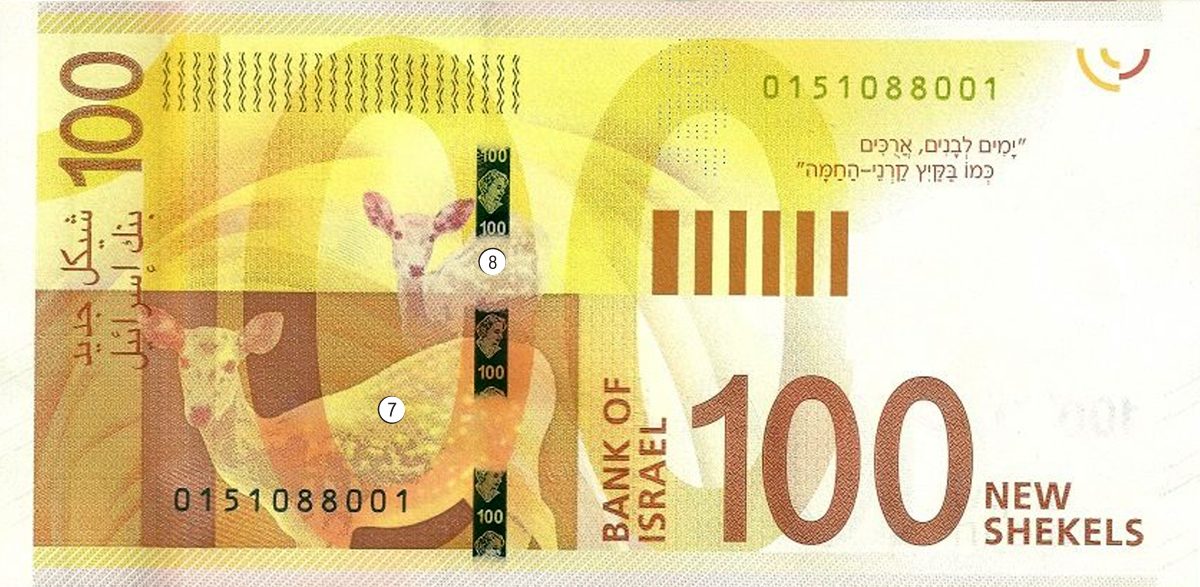Initially, the shekel was a weight unit: the root of the word has the meaning “weight”. Shekel is mentioned in the Bible. In 1897, shekel began to indicate annual contributions to the cash desk of a Zionist organization engaged in the acquisition of land for the future Jewish state. In 1969, the Israeli parliament passed a law introducing the name “shekel” for a unit of currency. But in 1984, inflation reached 444.9%. After price stabilization in 1985, a “new shekel” was introduced, equal to one thousand shekels in 1980.
Obverse

1. Portrait of the poetess Lea Goldberg . Her poems for children became classics of Hebrew literature, and songs became the cultural heritage of Israel. Leah translated into modern Hebrew and helped put on the stage of the Hebrew University a play by Joseph Soma from Mantua (15th century), considered the first one written in Hebrew.
2. Flowering almonds . In Israel, almonds are a symbol of renewal. The tree is mentioned in the book Coelet (Ecclesiastes).
The name of the plant in Hebrew, shaked, is consonant with the word “zealous”. Already in January, almonds are covered with flowers.
3. Microtext – a line from the poem by Lea Golberg “Almonds are blooming in the land of my love.”
4. Parts of the menorah – the golden seven-arm lamp-candlestick, one of the oldest symbols of Judaism. On the bill from the front, four parts of the menorah are depicted. Three more – on the back. The branches add up to a seven-arm menorah, if you look at the lumen. She is also depicted on the coat of arms of Israel. Menors use elements in the form of buds, flowers, and almond branches.
5. “Golden Book” – security element: changes color from gold to green, depending on the angle of inclination of the banknote. In 1901, the Fifth Zionist Congress was held in Basel, Switzerland, where the Jewish National Fund was created, the main task of which was to raise funds for the acquisition of land for Israel. The names of those who donated a lot of money were recorded in a special Golden Book. There is this tradition now. The funds go to the improvement and strengthening of Israel.
6. Watermark – a portrait of the poetess Lea Goldberg.
Reverse

7. Female roe deer – a biblical animal. In the 20th century, roe deer practically disappeared from the territory of Israel. Recreated livestock in the High Bar Carmel reserve. For this, roe deer were brought from Europe.
8. A color-changing protective tape with three “windows” in which the portrait of the poetess and denomination of the bill appear.
Photo: BANK OF ISRAEL


